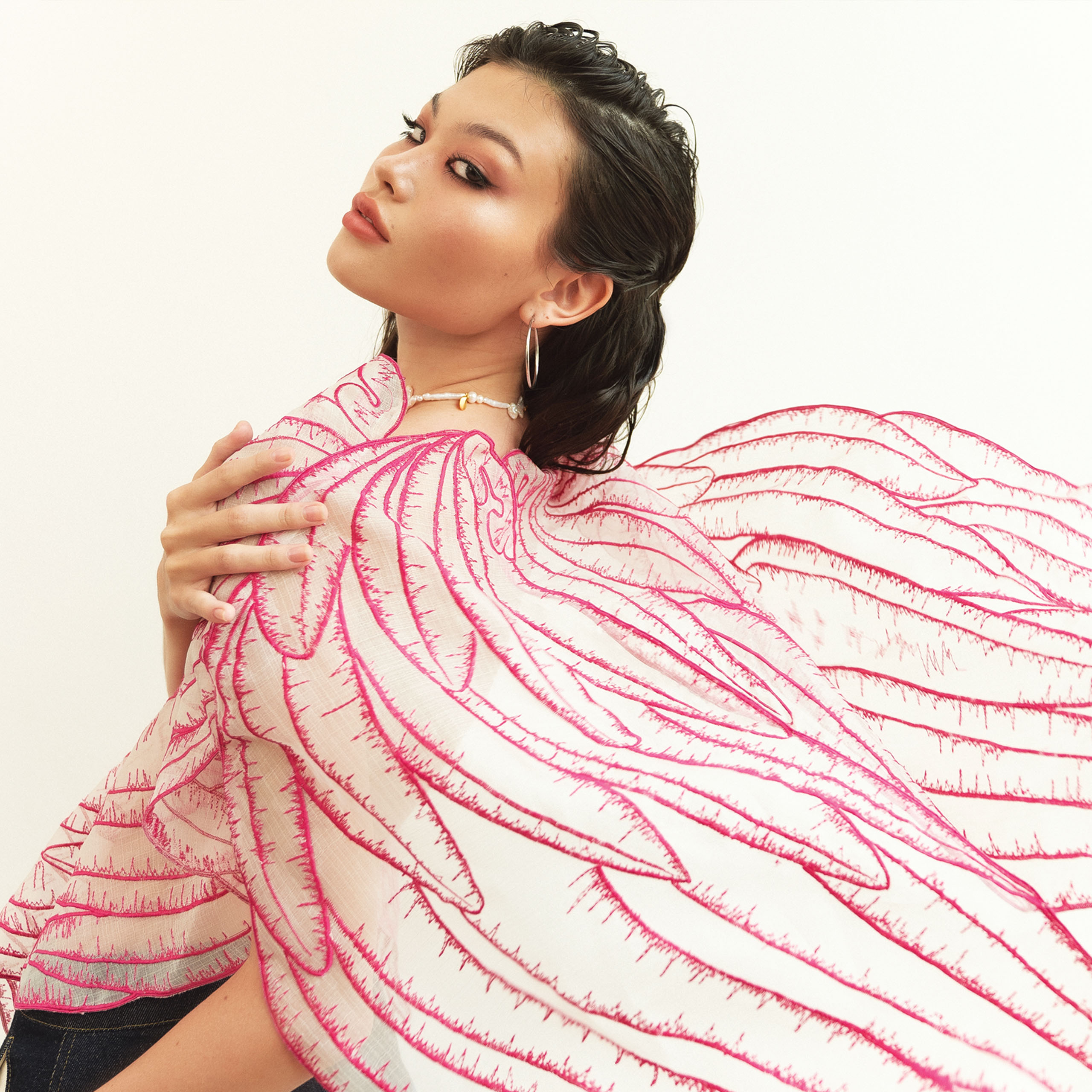In celebration of pride month, we put together five local designers who are changing the way we view genderful dressing—a fashion notion that embraces all identity, representation, and expression
This fashion feature is from MEGA’s June 2023 Issue
KELVIN MORALES

Designer Kelvin Morales is keen on breaking the barriers of fashion and disputing society’s idealized beauty standards, as evidenced by his work at his eponymous brand.
“I think it’s about embracing clothing for both genders and accepting the fact that clothes shouldn’t have a gender,” says Morales. “It’s about expressing identity and art.”
As he sees it, the past few years have witnessed a rise in gender-fluid and gender-nonconforming fashion, which has challenged societal norms and created more inclusivity and acceptance in the industry—embracing and celebrating all gender identities and expressions.
“We’ve become more open and accepting of the fact that everyone is different and the fashion industry is still looking and exploring different sizes, cultures and identities,” Morales shares. As an example, he mentions how the barong is now also worn by women. “My vision for Philippine fashion is to celebrate and be open to different genders.”
SEPH BAGASAO

Craftsmanship, intricacy, and balance—Seph Bagasao’s brand pillars rest in artisanal sensibilities, handmade quality pieces, romantic worldview, poetic consonance, contemporary values, and timelessness. For Bagasao, genderful dressing is being free from the limitations of societal views on clothes, to be able to dress in what one believes fits the true self.
“Now is the time that the world strives for more freedom in the language of fashion,” he shares. “Fashion is becoming more generic. People have become more monotonous and open to exploring beyond one’s gender.”
Bagasao notes that over the last couple of years, Filipinos have been more receptive. The people are seeing the light in the fashion industry, especially one that focuses on appreciating contemporary fashion. People are now able to see what local creatives can do beyond the norm. Filipino brands can now move around harmoniously with other notable international labels. His one true dream? That the world will see the intrinsic value of Philippine design.
NICOLO PEREZ

“For me, genderful dressing means that one is able to express themself freely through clothes,” says designer Nicolo Perez. “I think we’re actually in a very exciting time as heteronormative and binary fashion codes are already starting to get more and more blurred. For example, for my brand, we mainly do menswear pieces but a lot of women still wear our pieces.”
For Perez’s brand, one goal is to also create menswear that is different from high street brands. He shares that he is inspired by fashion labels that constantly obscure and subvert such codes. As he sees it, the local fashion scene is supportive of those causes, but some improvements are still needed.
“I think a lot of the young contemporary brands contribute a lot to that cause as well,” Perez notes. “My vision for Philippine fashion is to keep pushing the bounds of our creativity and have a creative community that is supportive and inspiring.”
RANDOLF

Homegrown label Randolf is about having fun and feeling good about one’s self. The brand calls for exploring the identity without fear of what others may think about being true and authentic.
“I’ve always believed that clothing doesn’t have gender,” says RJ Santos, the creative behind Randolf. “They’re clothes. I’ve always believed in dressing the way you feel without considering if the clothes were ‘meant to be worn’ by a man or a woman. I think the industry always has moments of breaking stereotypes, and then reverts back to normalcy, which is funny. But, I think that every time it happens, it’s more progressive.”
Local fashion has been accepting when it comes to the notion of genderful dressing, at least depending on the situation, according to Santos. He feels that there are advances and progress when it comes to being inclusive in the mainstream arena. Since the industry is outward thinking, it is only natural for it to keep up—on most things, if not all.
“I think Philippine fashion is going to be stronger in the future, especially now that we can all feel the difference in terms of the support independent brands are having,” the designer concludes.
HA.MÜ

Think like how a child’s mind would work: “boxless” and limitless—this is HA.MÜ’s core. And for the label, genderful dressing means that a garment is not considered based on what gender it serves, but instead on how it will work on the person wearing it.
“I feel like the newer generation of fashion designers here is more open to doing genderless clothing,” says Abraham Guardian, co-founder of HA.MÜ. “In terms of fashion enthusiasts, people have also become more open as well in terms of buying clothes from any ‘gender’ section in stores because of the influence of social media.”
Guardian’s vision for the local scene is for people to finally be more open about how they express themselves through personal style and for the media to be more accommodating in showcasing new styles rather than just the usual aesthetic.
Read more about the notion of genderful dressing in MEGA’s June 2023 issue, now available on Readly, Magzter, Press Reader and Zinio
Creative Direction NICOLE ALMERO. Fashion Direction RYUJI SHIOMITSU. Beauty Direction MIA CASTRO. Photography DENNIS SULIT, assisted by ANTONIO VAZQUEZ. Styling QUAYN PEDROSO. Makeup JANICA CLETO. Hair CHRISTIAN BOJO. Model TUTI of MERCATOR. Shot on location ESPACIO CREATIVO ESCOLTA. Sitting Editor BAM ABELLON. Fashion Writer MARIAN SAN PEDRO. Fashion Associate and Shoot Coordination BITHIA REYES. Special thanks to BELG of ESPACIO CREATIVO ESCOLTA and MIKI MICLAT of MERCATOR.







